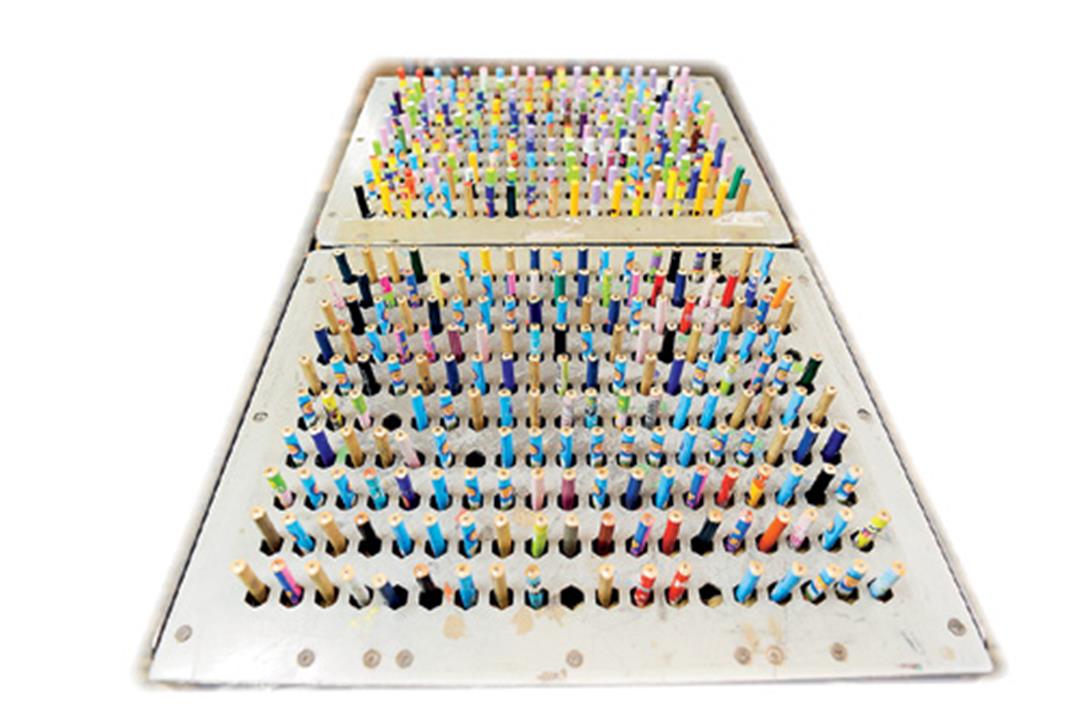Taiwan's first ballpoint pen
For third period, you walk into the exhibition room, where you are greeted by a map of northern Taiwan, upon which pencils have been used to convey information about the founding of Rabbit and its move from Taipei to Yilan.
Three brothers from Shang-hai opened Rabbit on Tai-pei's Heng-yang Street in 1947. Originally, it was a stationery supply company importing Parker and Wearever pens, ink and cartridges. The brothers then built a factory in Jing-mei that manufactured carbon and typing paper, as well as paperclips, thumbtacks and the like. Later, with the government implementing policies to encourage factories in Tai-pei to move elsewhere, Rabbit built this factory at the foot of Mt. Tai-ping in Yi-lan County, so as to be close to supplies of wood.
In 1964, the first generation of management decided to produce pencils as a way of planting the seeds of brand loyalty early, since pencils are used by children every day. And thus the Rabbit pencil-with its yellow barrel, red eraser and six sides to impede rolling-was born. Along with Simbalion and Liberty, Rabbit would become one of the three main pencil manufacturers of the era.
In 1966 Rabbit stepped out front to produce Taiwan's first ballpoint pen. It had a yellow barrel and blue cap, and it featured the Rabbit logo as well as the model number: F-220.
Since it was Rabbit's-and even Taiwan's-first ballpoint pen, why not number it 001? Tang explains that "F" referred to "Factory" and "220" represented the total number of company employees responsible for producing the pens.
Then why was it called -yuanzi bi (literally "atomic pen") in Chinese? Tang explains it was an era in which the atomic bomb had made a dramatic impact, and people felt that "atomic" represented cutting-edge technology. Back then stockings were marketed as "atomic stockings" and nylon trousers as "atomic pants." Atomic was used in much the way that "nano" is favored by marketers today.
At a consumer products exhibition held at the triservice ball park near the Presidential Palace back then, pitchmen used a Rabbit ballpoint pen to put dents in an aluminum basin. The feat left a deep impression on users of fountain pens, who always felt they required special care to keep from getting damaged.
What's more, the Rabbit ballpoint pen, already 45 years old, still costs just NT$5. "Let's compare a NT$28 gel pen against a NT$5 Rabbit pen: a typical gel pen will run for 450-500 meters before running dry, whereas our Rabbit ballpoint pen will run for 2200 meters." Tang clearly thinks there's no comparison when assessing which represents a better value.

There is a tremendous variety of pencil types, and each requires series of complicated steps to make. A visit to the Rabbit Pencil School provides an understanding of the specialization involved in pencil manufacture.